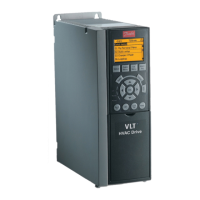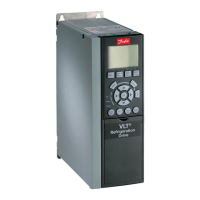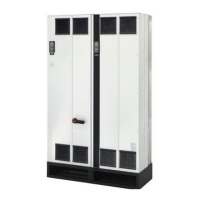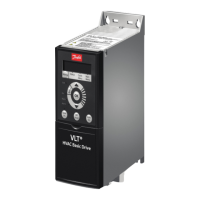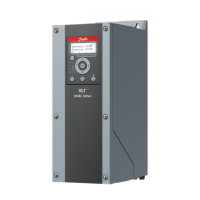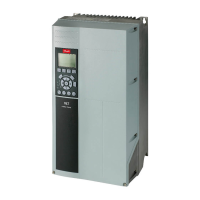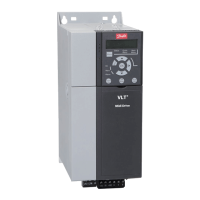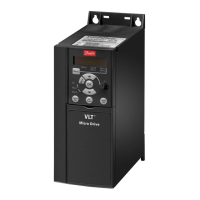1.5 Product Overview
A frequency converter is an electronic motor controller
that converts DC into a variable AC waveform output. The
frequency and voltage of the output are regulated to
control the motor speed or torque. The frequency
converter can vary the speed of the motor in response to
system feedback, such as position sensors on a conveyor
belt. The frequency converter can also regulate the motor
by responding to remote commands from external
controllers.
The frequency converter offers many control, monitoring
and efficiency functions such as:
•
Monitoring the system and motor status
•
Issuing warnings or alarms for fault conditions
•
Starting and stopping the motor
•
Optimising energy efficiency
Operation and monitoring functions are available as status
indications to an outside control system or serial communi-
cation network.
1.5.1
Interior Views
130BC252.11
1
15
14
8
9
12
13 (IP 20/Chassis)
13
(IP 21/54
NEMA 1/12)
11
10
16
Illustration 1.1 Interior Components - Enclosure Type D
1
LCP (Local Control Panel) 9 Relay 2 (04, 05, 06)
2 RS-485 fieldbus
connector
10 Lifting ring
3 Digital I/O and 24 V
supply
11 Mounting slot
4 Analog I/O connector 12 Cable clamp (PE)
5 USB connector 13 Ground
6 Fieldbus terminal switch 14 Motor output terminals 96
(U), 97 (V), 98 (W)
7 Analog switches (A53),
(A54)
15 Mains input terminals 91
(L1), 92 (L2), 93 (L3)
8 Relay 1 (01, 02, 03) 16 TB5 (IP21/54 only). Terminal
block for anti-condensation
heater
Illustration 1.2 Close-up View: LCP and Control Functions
Introduction
Operating Instructions
MG16J202 Danfoss A/S © Rev. 05/2014 All rights reserved. 5
1
1
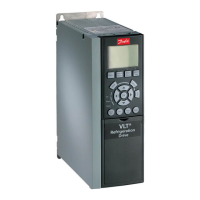
